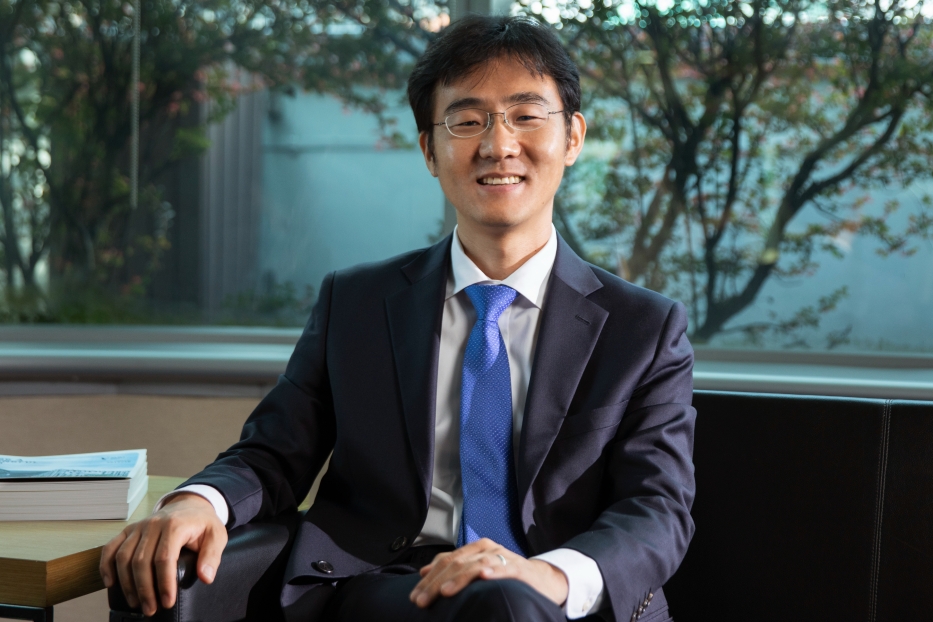Prof Lee Jungho

Feature on Lee Jungho, Assistant Professor of Economics
School of Economics, Singapore Management University
Appointed from July 2015 – August 2024
Understanding entrepreneurs through labour theory
Examining entrepreneurial success through the lens of Labour Economics has led Assistant Professor Lee Jungho to new insights about the difference between success and failure in new businesses.
Why does one new business flourish while another flounders? One answer is the choices made by businesses at the outset, including where to launch, whom to partner with, and how to fuel the operation—with cash or credit that is. The factors are myriad and the links between them are complex, so studying the outcomes of each recipe keeps economists and policymakers busy.
Assistant Professor Lee Jungho has found previously undiscovered insights by investigating business owners’ choices with the tools he has gained as a labour economist. Labour and entrepreneurialism may seem removed from each other given the different roles they play in business, but Lee finds that it all comes back to productivity.
“Understanding business owners through the lens tools developed for understanding labour economics is not usual, but I was very curious and excited about it—it motivates my research,” he enthuses.
Looking at business productivity through the lens of labour economics has enabled Lee to shed new light on mysteries such as why some people seem to go against the grain when starting a business.
“Why do some people choose to start their businesses in rural areas, and even do well, when it’s a fact that urban locations are a better bet to start a business—ample empirical data shows this” says Lee of the motivating question behind his research paper, Why do businesses grow faster in urban areas than in rural areas? In that study, conducted with Assistant Professor Xu Jianhuan, also of SMU, he examined the geographical factors behind the difference between business outcomes in the United States.
Lee highlights two previous explanations for the productivity gap between urban and rural businesses. One is the agglomeration economy, where firms gathered closely together enjoy cost reductions and productivity benefits. The other has some resemblance to Darwinian natural selection, as Lee explains, the other reason is firm selection, “where less productive firms are more likely to exit in metro than in rural areas.”
Less is known about the relationship between location and another business success factor: the role of financial constraints. This was what Lee explored in his business location paper.
“We used a firm-dynamics model with a location choice to show how borrowing constraints interact with growth and location choices of firms.”
The results suggested a reason why some firms choose the rural economic life: even though urban firms were more productive, they could not borrow enough money to finance their business.
“When the banks are unsure about how and whether your new business can be successful, they might be less willing to provide you with financing. This financing friction contributes to a substantial part of the observed growth-rate difference between urban and rural young firms,” Lee explains. Young rural firms don’t need as much initial financial capital to kickstart their business. “This is because they generally serve a small community and have fewer expenses,” he adds.
Another fateful finance choice that entrepreneurs and businesses make is about people rather than place: whether to go into partnership. Lee explored the motivations, benefits and costs of forming business partnerships in his paper, Estimating the benefits and costs of forming business partnerships.
“We found that on average, a business headed by a partnership tends to perform better than one that only has a single owner. This may be driven by a complementarity effect between the owners,” Lee says, speaking of the different skills and assets partners bring together.
He found that the need for finance was a common motivation behind choices to enter partnership. “For example, if you have a great business idea, but somehow the bank refuses to finance it – then one alternative way of financing could be to sell your equity and find partners.”
The broader policy implication for this study lies in the fact that business partnerships positively affect the productivity of the entrepreneurs involved. But he is cautious about whether this means that governments should incentivise people to enter partnerships, as individual business people each have their own interests which are not always a good match. “We need to understand the underlying mechanism or reason behind a business partnership formation, which is what I aim to do through my research,” he says.
Entrepreneurship in the digital age
Despite the complexities, Lee speaks positively about the entrepreneurial landscape. Rapid technological innovation has lowered the entry barriers for young people looking to start businesses. “What we are seeing now is a democratisation of entrepreneurship, with digitalisation creating lots of opportunities,” Lee says.
When he was growing up in South Korea, the idea of creating his own business did not occur to him as an option. “A typical career path for my friends and me would be to graduate from university, get a job in a big company, and remain there for a long time. That perception has changed, not just in South Korea, but I believe in Singapore as well.”
Despite the rapidly changing business landscape, Lee believes that the heart of entrepreneurship is unchanged.
“The process of starting a business, regardless of what era you are in, is about identifying a customer pain point that you want to solve, and coming up with a business solution that could be profitable. You then need to execute your plan, sell your idea to investors, and then form a team to materialise it,” he says.
“Creating a good business plan has always been the key challenge–that still remains. It is creativity that makes the difference, and I believe it is key to capturing the myriad of new opportunities in the digital age,” Lee concludes.